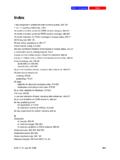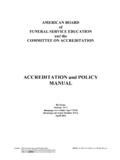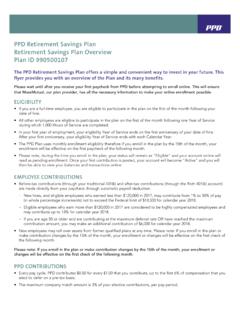Transcription of The Chaplain s Resource Manual - VFW PA HQ
1 1 The Chaplain s Resource Manual Veterans of Foreign Wars of the United States Information - Prayers Resources Department of Pennsylvania Revised and Updated July 2010 2 CONTENTS Page 2 The Chaplaincy Page 5 Post Chaplain Page 5 Purpose of Chaplains Page 6 Qualifications of Chaplains Page 6 Duties and Responsibilities Page 8 Prayers for Various Occasions Page 8 Invocations Page 11 Special Days and Seasons Page 13 Benedictions & Closing Prayers Page 15 Banquet Grace Prayers Page 18 Loyalty Day Prayers (History of Loyalty Day, p. 53) Page 19 Memorial Day Prayers (History of Memorial Day, p. 53) Page 20 Prayers for Deceased Comrades Page 21 Veterans Day Prayers Page 23 Other Prayers Page 25 Members of the Armed Forces and Other Prayers Page 36 Special Disciplinary Hearing Prayers Page 37 Guidelines for Inclusive Public Prayers Page 38 Appendix Page 39 Guidelines for Hospital Visitation Page 41 Procedure for Viewing at a Funeral Home Page 43 Template for Protestant Funeral Service Page 46 Template for Grave Site Service Page 47 Template for Memorial Service Page 49 Military Honors at Funerals Page 50 Template for Joint Memorial Service Page 53 History of Taps Page 53 VFW Resources and Addresses Page 54 Suggested Scripture Readings 3 THE CHAPLAINCY (Background History)
2 During times of turmoil and war, mankind always looks to religion and religious figures for comfort. Both ancient and modern societies have turned to religion and communities have extended the comfort of religion to those serving in the heat of battle. Priests and other religious figures petitioned gods and spirits for victory in war. The Scriptures often refer to priests accompanying troops into battle. (see: Deut. 20: 2-4; Joshua 6: 2-5). The modern chaplaincy s roots and origin are essentially in the medieval church. The word Chaplain dates from this period. A fourth century story tells of the pagan Roman soldier called Martin of Tours. As Martin and his men were returning from the battlefield in the middle of a severe winter, they met a shivering beggar at the city gate of Amiens.
3 Martin had compassion on the beggar. He cut his cloak in two parts and gave one to the beggar. That night he had a vision of Christ wearing the beggar s cloak. As a result, Martin converted to Christianity. Martin enraged Emperor Julian by saying, Hitherto I have served you as a soldier; allow me now to become a soldier to The Emperor later released him from the army. He was baptized and in 371, the people of Tours were so impressed by his holy life and miracles, they made him their Bishop. Martin of Tours later became the patron saint of France and his cloak, considered a holy relic, was carried into battle by Frankish kings. This cloak was called in Latin the cappa.
4 Its portable shrine was called the cappalla and its caretaker priest, the cappellanus . Eventually, all clergy affiliated with the military were called capellani, or in French, chapelains, hence chaplains. The Council of Ratisbon (742) first officially authorized the use of chaplains for armies, but prohibited the servants of God from bearing arms or fighting. However, religious figures in this era often went into battle as fighting men with the army. The conflict between the religious function and the military role can be seen in the career of the patron saint of military chaplains, St. John Capistrano, who besides serving as a Church Diplomat led the army at the Battle of Belgrade in 1456.
5 This European tradition extended to colonial America where the Chaplain both fought alongside and ministered to his neighbors in the militia. The tradition in colonial America of the fighting Chaplain began changing. After the Civil War, chaplains were no longer permitted to carry weapons. And today, chaplains are supposed to be issued a Geneva Convention Identity Card. Chaplains are ordained clergy, endorsed by their faith group to serve all people, regardless of religious or non-religious affiliation. THE UNITED STATES MILITARY CHAPLAINCY THE ARMY: Chaplains had no role in the United States Army until 1791. However, colonial clergymen frequently raised military units from their own congregations and communities, and often led them in battle.
6 A number of New England clerics served at Concord. Some even shouldered their muskets and fought alongside their fellow soldiers. The first appointed Army Chaplain was Rev. John Hurt in 1791. He had already served seven years during the Revolutionary War. The history of the Chaplaincy from this time on (until the Civil War) is full of uncertainties. 4 During the War of 1812, Chaplain James J. Wilmer was the only Chaplain known to have died during this war. During the Civil War the Army Chaplaincy developed many procedures still in place. Most chaplains became less a fighting parson, and more spiritual in their emphasis. The Civil War witnessed for the first time, a large number of Roman Catholic chaplains in the field.
7 It was also during the Civil War that we read of the first Jewish chaplains and the first Black and Indian chaplains. During the Civil War Four Army Chaplains were awarded the Congressional Medal of Honor. The act of 1883 mandated that the Chaplain should also perform the duties of schoolmaster at the Post. Additionally, chaplains generally held services in civilian settlements; established Indian congregations; officiated at functions; visited the sick, prisoners and soldiers in barracks; served as post gardeners; and, occasionally as legal counsel. World War I and II had thousands of chaplains from various faith groups serving the spiritual needs of the fighting men. Today, the Army Chaplains continue to serve the men and women of the United States Army, National Guard, and Reserves with spiritual and moral support.
8 THE NAVY: The Navy Chaplaincy dates back to the Continental Navy. What was critical was that the Continental Congress adopted regulations which provided a place for religion and the Chaplain in the Navy. Using the guidelines of the Mother Country, Divine Services were written into the Navy Regulations. However, few ships were authorized to be built and thus there were few Navy Chaplains. Rev. Benjamin Balch was the first Chaplain known to have served in the Continental Navy. From 1785 to 1798, there was no American Navy and, therefore, no Navy Chaplains. The first Navy Chaplain to die as the result of enemy action was Chaplain John L. Lenhart, who was on board the Cumberland when she was rammed and sunk by the CSS Virginia (formerly called the Merrimack).
9 With a new edition of the Navy Regulations in 1802, additional duties of chaplains stated that they should perform the duty of schoolmaster, instructing The Navy Chaplain had to be a teacher of writing, mathematics, navigation, and whatever else they might need to make them proficient, besides his religious duties. That did not change much until 1906 when the Navy established certain guidelines that eliminated the teaching function and established procedures and qualifications for Navy Chaplains and the establishment of the Chaplain Corps. Navy Chaplains have served with distinction during WWI, WWII, Korea, Vietnam, Desert Storm, and Iraqi Freedom. Navy Chaplains provide ministry to all the sea services, including, the Navy, Marine Corps, Coast Guard, Sea Bees, and Merchant Marine To recount the history of the Chaplain Corps and omit two of its most revered Navy chaplains would be a grave mistake.
10 Chaplains Joseph T. O Callahan and Vincent Capodanno were both awarded the Congressional Medal of Honor. THE AIR FORCE: Before 1939, the Army s air arm was a fledgling organization. By the end of the end of WW II, the Army Air Forces had become a major military organization comprised of many air forces, commands, divisions, wings, groups, and squadrons, plus an assortment of 5 other organizations. The National Security Act of 1947 became law on July 26, 1947. It created the Department of the Air Force, headed by a Secretary of the Air Force. From this beginning grew the Air Force Chaplaincy. At first the Air Force Chaplains received their training at the Army School and eventually established their own school.
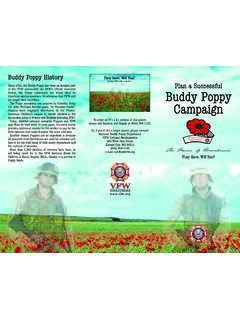
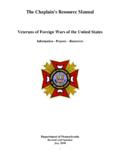
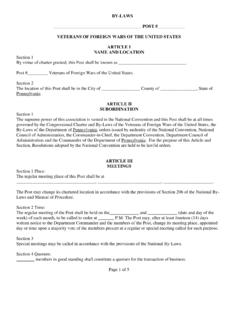
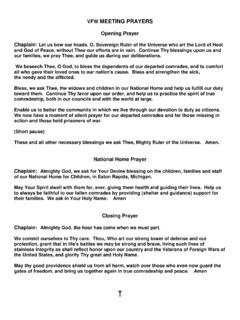
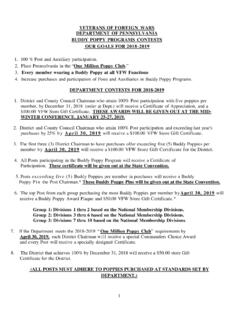



![Index [about.usps.com]](/cache/preview/4/e/4/f/8/a/b/d/thumb-4e4f8abd1f1ef48ad1e70b83f15a8f08.jpg)
